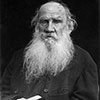Hippocrates himself is an example of the concurrent study of the two departments. On the one hand, he was the first of the Greeks who is known to have compiled a book of Elements. This book, we may be sure, contained in particular the most important propositions about the circle included in Euclid, Book III. But a much more important proposition is attributed to Hippocrates; he is said to have been the first to prove that circles are to one another as the squares on their diameters with the deduction that similar segments of circles are to one another as the squares on their bases. These propositions were used by him in his tract on the squaring of lunes, which was intended to lead up to the squaring of the circle. The latter problem is one which must have exercised practical geometers from time immemorial. Anaxagoras for instance is said to have worked at the problem while in prison.
Achimedes (1920)



















